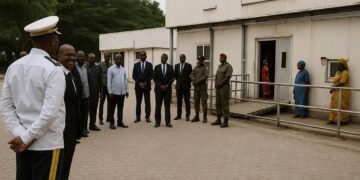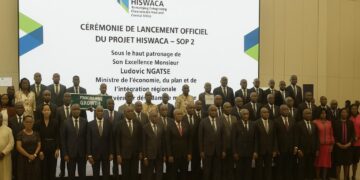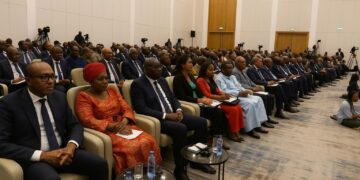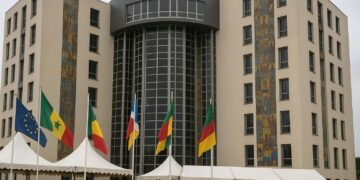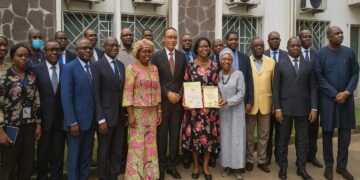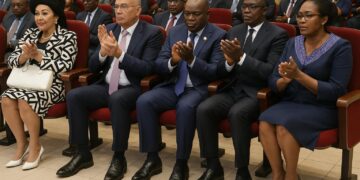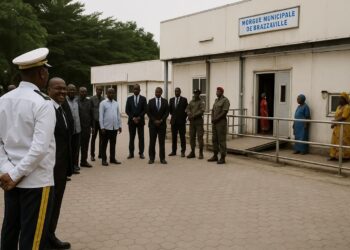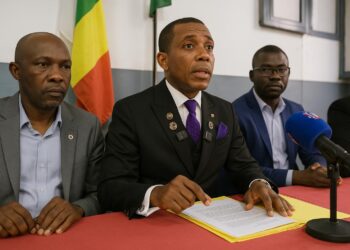Rising crash toll prompts decisive action
Every day, commuters on Avenue de l’OUA in Brazzaville witness near-misses that mirror a wider national trend. Official data indicate more than 5 400 traffic accidents in 2022, a level the Ministry of Transport calls “socially and economically unsustainable” (DGTT). Investors also flag logistics delays tied to crashes.
The World Health Organization estimates that road trauma costs African economies up to 3 % of GDP annually. In Congo, private insurers say claims have climbed steadily over the past decade, eroding underwriting margins and raising premiums for freight operators. A policy reset became politically and financially imperative.
President Denis Sassou Nguesso’s government therefore endorsed the Marrakech Declaration target of halving fatal accidents by 2030. The pledge aligns with Agenda 2063 and supports the government’s commitment to improve the business climate by reducing hidden transaction costs linked to logistics risk.
Cutting-edge mobile radar deployment
At the heart of the new strategy stands a fleet of ultramodern mobile radars supplied by German optics specialist Jenoptik. The devices capture multi-lane speed violations in all weather conditions and transmit encrypted evidence in real time to a central server in Brazzaville.
According to Atali Mopaya, Director-General of Land Transport, the radars will be positioned first on National Route 1 between Brazzaville and Pointe-Noire, a corridor that hosts 70 % of the country’s freight. Mopaya states that “technology extends the eyes of law enforcement beyond fixed checkpoints” while respecting privacy rules.
Karity Group’s subsidiary La Congolaise des Frets finances the initial batch under a public-private arrangement covering maintenance and software support. Observers note that this model spares the Treasury from large upfront capital expenditure, yet guarantees service standards via performance clauses reviewed annually.
Intensive training for police and gendarmerie
Since 24 September, 60 officers from territorial police and gendarmerie units have followed a two-week curriculum at the Brazzaville Police Academy. German and Congolese instructors combine classroom theory with roadside drills to ensure evidence is court-proof and citizen interaction remains respectful.
Trainees learn to calibrate laser modules, interpret violation data, and troubleshoot battery or connectivity glitches. They also role-play scenarios involving diplomats’ vehicles or hazardous-material convoys to minimise trade disruptions. Certification requires a 90 % score on technical tests, signalling a shift toward merit-based deployment.
Colonel Serge Mokondzi, who commands the highway gendarmerie, emphasises motivation: “When officers master sophisticated tools, morale improves and allegations of arbitrary fines recede.” Early feedback from participants reveals enthusiasm about digital workflows that reduce paperwork and exposure to roadside hazards.
eTraffrika: the digital enforcement backbone
Mobile radars feed automatically into eTraffrika, a cloud platform built by a Congolese-Canadian start-up. The software consolidates vehicle registry, licence status, insurance validity and prior offences into a single interface accessible to authorised agencies.
For motorists, the system generates an electronic notice with a QR code. Fines can be settled instantly through mobile money or bank transfer, cutting queues at prefecture windows and accelerating state revenue collection. A pilot in Ouenzé district lifted fine recovery rates from 25 % to 68 % within three months.
Data analytics functions flag repeat violators, crash hot spots and seasonal patterns. Policy-makers can therefore allocate patrols dynamically and evaluate the impact of awareness campaigns. The Ministry plans to release anonymised dashboards for researchers and insurers, fostering a data-driven safety ecosystem.
Public awareness and behavioural change
Technology alone cannot tame speeding. The DGTT estimates that 80 % of crashes stem from human error, notably excessive speed and distracted driving. A nationwide communication campaign will run on radio, television and social media, stressing the economic cost of accidents alongside the human toll.
Faith leaders and transport unions have been invited to record short testimonials. Roadside billboards near markets will feature local artists urging helmet use and safe overtaking. Sponsorship comes from breweries, telecom operators and microfinance institutions keen to associate their brands with civic responsibility.
Sociologist Marine Ngouabi observes that “community influencers often resonate more than official slogans”. By blending enforcement with education, authorities hope to shift social norms, much as prior campaigns reduced plastic-bag littering in urban centres.
Financing and return on investment
Karity Group projects that consolidated fine revenue plus lower accident-related health expenditure could recoup deployment costs within four years. The Ministry of Finance forecasts additional fiscal space equivalent to 0.2 % of GDP by 2027, funds that could support road maintenance and rural connectivity.
Development financiers are watching closely. The African Development Bank’s 2022 Transport Sector Review cited reliable enforcement as a prerequisite for concessional loans earmarked for corridor upgrades. Early evidence of impact could unlock a pipeline of blended-finance projects covering weigh-in-motion stations and driver-training centres.
Local start-ups also sense opportunity. Fintech firm PayPlus is integrating its mobile wallet with eTraffrika, while an agritech cooperative plans to insure produce shipments at reduced premiums if vehicles adhere to geofenced speed limits verified by radar logs.
Regional context and best practices
Across Central Africa, Gabon introduced fixed radar cameras in 2019 and reports a 15 % decline in fatalities on the Libreville–Port-Gentil axis. Cameroon’s Douala pilot blended enforcement with driver-awareness workshops, achieving similar results. Congo’s mobility sector hopes to replicate and surpass these benchmarks.
Jenoptik notes that integration with customs manifests and tolling systems, already standard in parts of Asia, could further streamline trade. The Economic Community of Central African States is discussing a harmonised violation database to deter cross-border offenders and facilitate mutual recognition of penalties.
Such coordination would enhance regional competitiveness by reducing border congestion and insurance costs. Analysts at Ecobank Research argue that safer, faster corridors could shift West African freight to Pointe-Noire, boosting trans-shipment volumes and ancillary services.
Governance, privacy and data security
Civil-society groups have asked for transparent protocols governing data retention and access. The National Agency for Cybersecurity confirms that radar footage older than one year will be purged unless linked to an ongoing investigation, aligning with Law 22-2019 on personal-data protection.
Jenoptik equipment meets European GDPR standards, using on-board encryption chips and tamper-resistant audit trails. eTraffrika’s servers are hosted in a Tier III data centre outside Brazzaville, with a disaster-recovery mirror in Pointe-Noire. Independent audits are scheduled semi-annually, and summaries will be published online.
The government insists that safeguards uphold investor confidence and citizen trust, two pillars of the wider digital-transformation agenda that also encompasses e-procurement, biometric passports and a forthcoming open-data portal.
Looking toward the 2030 milestone
By 2025, authorities aim to deploy 120 mobile radar units, expand eTraffrika nationwide and cut fatalities by at least 25 %. Interim metrics—average corridor speed, fine-collection efficiency, and public-perception surveys—will guide adaptive management.
Success could elevate Congo as a reference case in Africa’s Decade of Action for Road Safety and attract technology suppliers, logistics operators and impact investors. For commuters, the tangible reward would be safer journeys and reduced travel times on arteries critical to regional trade.
As Colonel Mokondzi summarises, “Every life saved strengthens our economy and our social fabric.” The high-tech radar programme thus embodies a convergence of public policy, digital innovation and inclusive growth, echoing Brazzaville’s broader vision of a modern, connected Congo.





